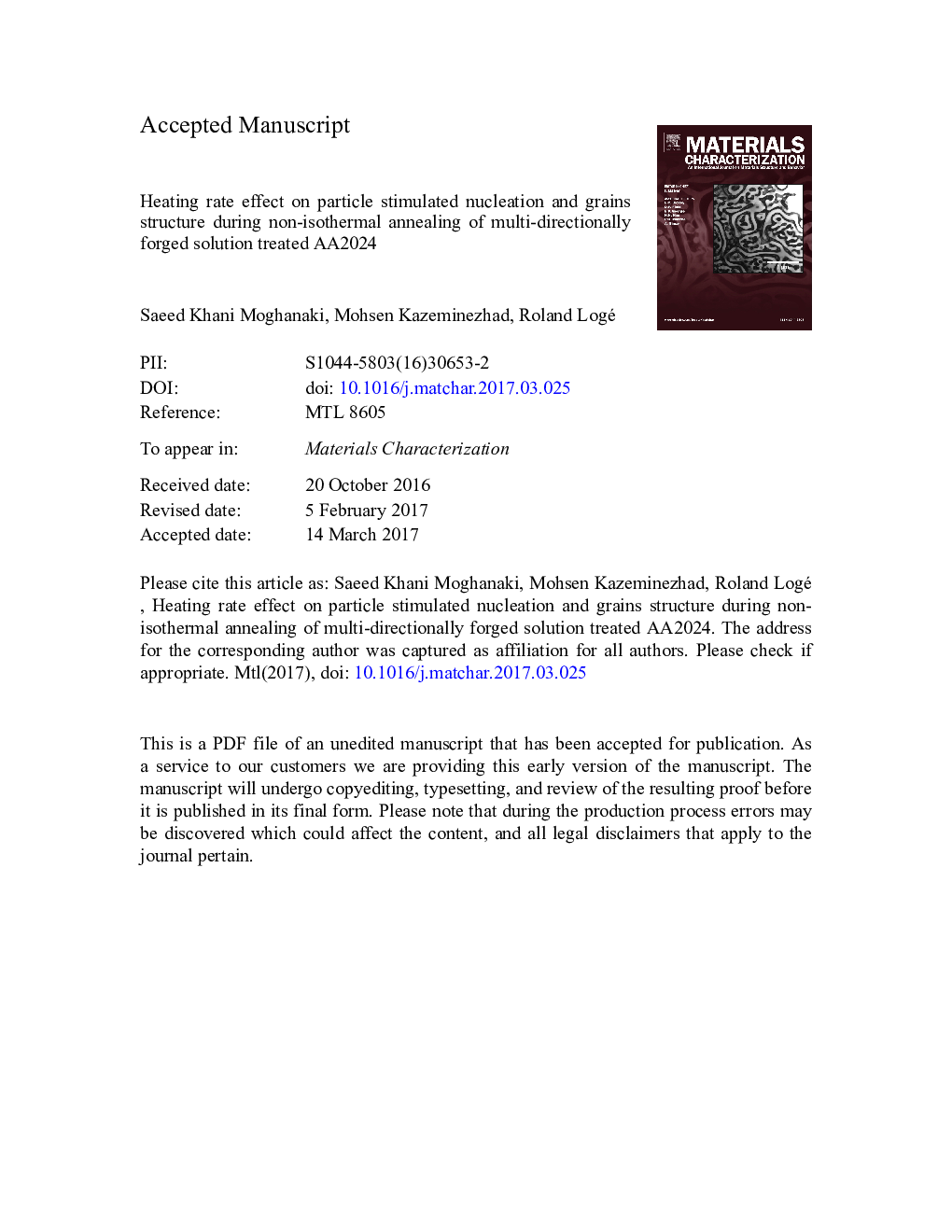| کد مقاله | کد نشریه | سال انتشار | مقاله انگلیسی | نسخه تمام متن |
|---|---|---|---|---|
| 5454923 | 1514360 | 2017 | 22 صفحه PDF | دانلود رایگان |
عنوان انگلیسی مقاله ISI
Heating rate effect on particle stimulated nucleation and grains structure during non-isothermal annealing of multi-directionally forged solution treated AA2024
دانلود مقاله + سفارش ترجمه
دانلود مقاله ISI انگلیسی
رایگان برای ایرانیان
کلمات کلیدی
موضوعات مرتبط
مهندسی و علوم پایه
مهندسی مواد
دانش مواد (عمومی)
پیش نمایش صفحه اول مقاله

چکیده انگلیسی
Particle stimulated nucleation (PSN) is one of the important mechanisms of recrystallization which is investigated in this research during non-isothermal annealing of multi-directionally forged solution treated aluminum alloy 2024. Non-isothermal annealing is performed up to temperatures of 380 °C and 450 °C at heating rates of 10, 100 and 200 K·minâ 1 using a Gleeble 3800 thermo-mechanical simulator. In order to investigate the microstructure, field emission gun scanning electron microscope (FEG-SEM) equipped with electron backscatter diffractometer (EBSD) and differential scanning calorimetry (DSC) are utilized. The results show that the heating rate has a significant effect on the PSN and grain structure. An increase in the heating rate decreases the relative frequency and misorientations of high-angle grain boundaries (HAGBs), and suppresses PSN during non-isothermal annealing up to 380 °C, but it promotes PSN during annealing up to 450 °C. This controversy effect is related to the Zener pinning effect of fine particles of Sâ²/S (Al2CuMg) during recrystallization. In non-isothermal annealing up to 450 °C, increasing the heating rate leads to smaller average recrystallized grain size and narrower grain size distribution due to the suppression of recovery; the driving pressure of recrystallization is high, and the critical diameter of coarse particles for PSN is decreased. Texture measurement shows that the recrystallization front migrates and consumes the surrounding Copper component {112} ã111ã which is developed during deformation. The final microstructure is approximately randomly oriented and this suggests that the governing nucleation mechanism is PSN.
ناشر
Database: Elsevier - ScienceDirect (ساینس دایرکت)
Journal: Materials Characterization - Volume 127, May 2017, Pages 317-324
Journal: Materials Characterization - Volume 127, May 2017, Pages 317-324
نویسندگان
Saeed Khani Moghanaki, Mohsen Kazeminezhad, Roland Logé,